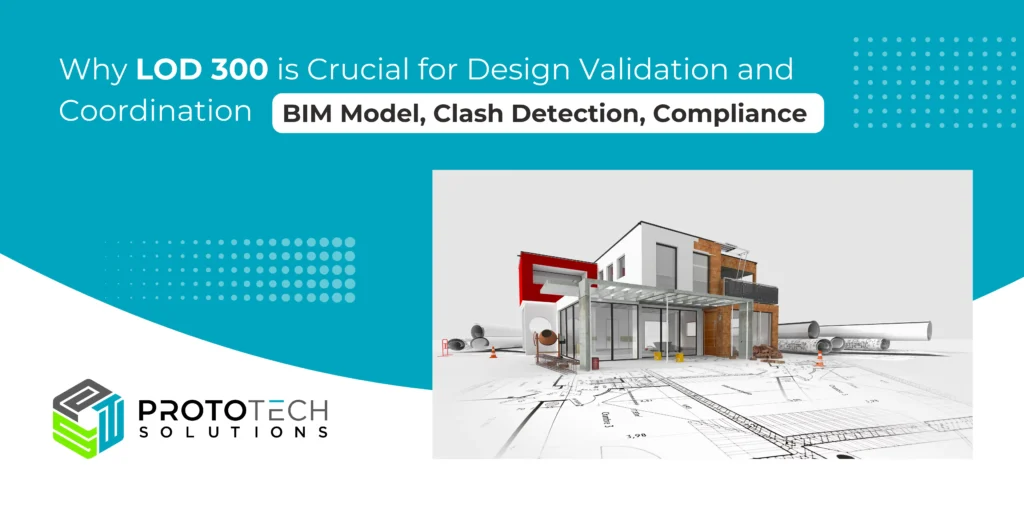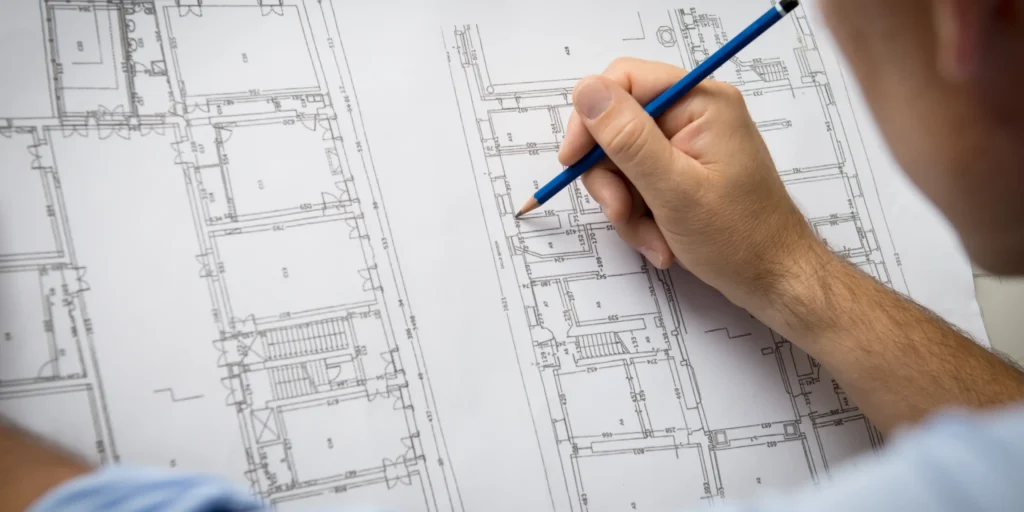Why LOD 300 is Crucial for Design Validation and Coordination

Introduction
Building Information Modeling (BIM) has revolutionized the architecture, engineering, and construction (AEC) industry, bringing unparalleled accuracy, efficiency, and collaboration to projects of all sizes. Within the BIM framework, the concept of Level of Development (LOD) is crucial for ensuring that models provide the appropriate amount of detail and information at various stages of a project. LOD 300, in particular, stands out as a critical level for design validation and coordination.
According to recent market survey reports from “Markets and Markets,” the Building Information Modeling Market is projected to soar from USD 8.0 billion in 2024 to USD 14.8 billion by 2029, growing at a CAGR of 13.1%.
This blog post explores why LOD 300 is vital for accurate design validation and effective coordination among stakeholders.
What is LOD 300?
LOD 300 represents a significant stage in the development of a BIM model. At this level, the model elements are accurately modeled and defined, with specific dimensions, quantities, locations, and orientations. The information provided at LOD 300 is suitable for the development of shop drawings and for detailing, fabrication, and construction purposes. Unlike earlier stages, such as LOD 100 or LOD 200, LOD 300 provides a more detailed and reliable representation of the building components, allowing for better decision-making and collaboration.
Importance of LOD 300 for Design Validation

Design validation is a crucial step in ensuring that the proposed design meets the project requirements, codes, and standards. LOD 300 is essential for effective design validation because it provides the necessary level of detail and accuracy to assess the feasibility and performance of the design.
1. Accurate Representation
One of the primary benefits of LOD 300 is the accurate representation of building components. At this level, the geometry of elements is defined with precise dimensions, ensuring that the model accurately reflects the design intent. This accuracy is essential for design validation, as it allows architects, engineers, and other stakeholders to assess whether the design meets the project requirements and constraints. By providing a reliable representation of the building components, LOD 300 helps identify potential issues and discrepancies early in the design process, reducing the risk of costly revisions and delays later on.
2. Clash Detection and Resolution
One of the primary benefits of LOD 300 is its ability to facilitate clash detection and resolution. At this level, the model elements contain precise geometry and spatial relationships, allowing for the identification of potential conflicts between different building systems or components. By detecting and resolving clashes early in the design process, project stakeholders can avoid costly rework, delays, and safety issues during construction.
3. Code Compliance Checking
LOD 300 provides the necessary level of detail for code compliance checking. By incorporating precise geometry and relevant data into the model, project teams can assess whether the design meets the required building codes, accessibility standards, and safety regulations. This validation process helps to identify and resolve any code-related issues early in the design phase, reducing the risk of costly changes or delays during construction.
4. Enhanced Visualization
LOD 300 provides enhanced visualization capabilities, allowing stakeholders to better understand the design and make informed decisions. The detailed geometry and accurate representation of building components enable the creation of realistic 3D views and renderings, facilitating design reviews and presentations. Enhanced visualization helps stakeholders visualize the design intent, identify potential issues, and explore different design options. By providing a clear and comprehensive visual representation of the project, LOD 300 supports effective communication and decision-making, ensuring that the design meets the project goals and expectations.
Importance of LOD 300 for Coordination

Effective coordination among project stakeholders is essential for the successful delivery of BIM projects. LOD 300 plays a crucial role in facilitating coordination by providing a common platform for communication and collaboration.
1. Interdisciplinary Coordination
LOD 300 enables effective interdisciplinary coordination among different design disciplines, such as architecture, structural engineering, and MEP (mechanical, electrical, and plumbing) engineering. With precise geometry and relevant data, project teams can identify potential conflicts, optimize system layouts, and ensure that the various building systems work together seamlessly. This coordination helps to minimize rework, reduce construction time, and improve overall project efficiency.
2. Stakeholder Engagement
LOD 300 provides a clear and accurate representation of the design, making it easier for project stakeholders to understand and engage with the project. By presenting the design at a level of detail that is suitable for decision-making, LOD 300 facilitates effective communication and collaboration among clients, end-users, and other stakeholders. This engagement helps to ensure that the design meets the project requirements and aligns with stakeholder expectations.
3. Procurement and Fabrication
LOD 300 is crucial for procurement and fabrication processes. With precise geometry and relevant data, project teams can accurately quantify materials, generate bills of quantities, and procure the necessary materials and equipment. Additionally, LOD 300 provides the necessary information for fabrication, enabling the creation of shop drawings and the prefabrication of building components off-site. This process improves construction efficiency, reduces waste, and enhances quality control.
Conclusion
LOD 300 is a critical stage in the BIM process that supports accurate design validation and coordination among stakeholders. By providing precise geometry and relevant data, LOD 300 enables effective clash detection, constructability review, code compliance checking, and interdisciplinary coordination. However, achieving the full benefits of LOD 300 requires careful data management, effective collaboration and communication, and a high level of expertise among project team members.
As the AEC industry continues to adopt BIM and LOD, it is essential for project stakeholders to recognize the importance of LOD 300 and to invest in the necessary resources and processes to ensure its successful implementation. By leveraging the power of LOD 300, project teams can deliver more efficient, cost-effective, and high-quality projects that meet the needs of clients and end-users alike.
Outsourcing Partner: Your Key to Successful Project Outcomes

Choosing an outsourcing partner is crucial for successful project outcomes because they bring specialized expertise, advanced technology, and cost-effective solutions. They streamline workflows, enhance collaboration, and ensure high-quality deliverables, allowing you to focus on core business activities while meeting project deadlines and staying within budget, ultimately driving overall project success.
For successful project outcomes, Think of ProtoTech Solutions as your growth and trusted BIM outsourcing partner with TWO decades of domain experience. We ensure your projects are executed with precision and efficiency. By implementing best practices for Level of Development (LOD), from conceptual design (LOD 100) to as-built documentation (LOD 500), we enhance the effectiveness of BIM models. This ensures they provide accurate and reliable information crucial for both the design and construction phases.
Software Expertise: AutoCAD, Revit, Autodesk ReCap Pro, Navisworks, Autodesk 3ds Max, Inventor, SolidWorks, and more.






